Conan Re-Read: “Red Nails”
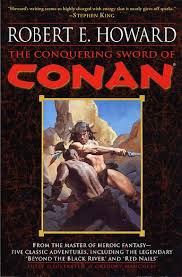 Six months ago Bill Ward and I began a re-read of every Conan story that Robert E. Howard ever wrote and completed. Today we’re posting our discussion about the final one, “Red Nails.” We hope you’ll join in.
Six months ago Bill Ward and I began a re-read of every Conan story that Robert E. Howard ever wrote and completed. Today we’re posting our discussion about the final one, “Red Nails.” We hope you’ll join in.
Bill: “Red Nails” is the last Conan story Robert E. Howard wrote, and it is perhaps a little difficult to look at it without that fact coloring the discussion to some extent — particularly after reading and talking about every other story in the Conan canon! A lot could be (and has been) said about REH’s state of mind at this time, the period leading up to the final year of his life, a year in which he wrote no fantasy at all. Arguably, the final Conan stories seem to show a bit of a distancing between REH and his creation, either through characterization such as in “Beyond the Black River,” or by focusing on other point-of-view characters such as in “The Black Stranger” or, most starkly, “A Witch Shall Be Born.” I think anyone reading “Red Nails” who has some awareness of REH’s life will at some point stop to ponder the question of whether or not he ever intended to return to Hyboria, or if perhaps the Cimmerian himself had run out of stories to dictate at REH’s shoulder. Whatever the answer, “Red Nails” does serve as a fitting farewell to the character and world that have become so dear to so many, offering a story of adventure, intrigue, and exoticism that, while it may not quite be up to the standards of the very best in the series, delivers on all of the promises inherent in a Conan yarn while at the same time offering a few surprises as well — most notably in the character of Valeria.
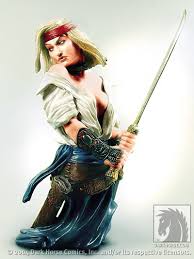 Howard: She’s the closest we’ve come for a long time to seeing someone who is Conan’s equal partner… although she’s not, really. She IS the most formidable of the women who appear in Robert E. Howard’s Conan stories, though not in all his work. It’s difficult to imagine Sonya from “Shadow of the Vulture” or Dark Agnes being captured multiple times over the course of a single adventure. That said, there’s no denying Valeria is the second most capable character in the entire story, second only to the amazing Conan himself. Arguably he wouldn’t be alive at the conclusion if she hadn’t snagged his belt while he was fighting the dragon (he would have plummeted off the cliff or into its mouth), and it’s made clear multiple times just how dangerous she is with her sword.
Howard: She’s the closest we’ve come for a long time to seeing someone who is Conan’s equal partner… although she’s not, really. She IS the most formidable of the women who appear in Robert E. Howard’s Conan stories, though not in all his work. It’s difficult to imagine Sonya from “Shadow of the Vulture” or Dark Agnes being captured multiple times over the course of a single adventure. That said, there’s no denying Valeria is the second most capable character in the entire story, second only to the amazing Conan himself. Arguably he wouldn’t be alive at the conclusion if she hadn’t snagged his belt while he was fighting the dragon (he would have plummeted off the cliff or into its mouth), and it’s made clear multiple times just how dangerous she is with her sword.
It could be argued that Conan’s beloved Belit is the strongest of all the female characters he meets, although much of that strength is implied rather than witnessed directly in martial terms.
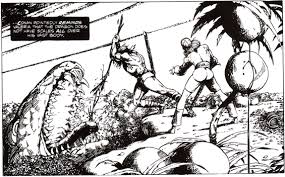 Bill: I think it’s interesting that Valeria and Belit are both pirates, though they embody different archetypes: Valeria is a swashbuckler, Belit a Pirate Queen. And I found a lot of satisfaction at the end of the story as Conan is about to set off into the unknown with a woman who is both a romantic partner, and a fellow-adventurer. Again, this is probably a case of adding unwarranted weight to the final moment in the final story, and of course we know that chronologically many more events will comprise Conan’s history, but as a final look at the Cimmerian I find this a happier end than, say, “Beyond the Black River.”
Bill: I think it’s interesting that Valeria and Belit are both pirates, though they embody different archetypes: Valeria is a swashbuckler, Belit a Pirate Queen. And I found a lot of satisfaction at the end of the story as Conan is about to set off into the unknown with a woman who is both a romantic partner, and a fellow-adventurer. Again, this is probably a case of adding unwarranted weight to the final moment in the final story, and of course we know that chronologically many more events will comprise Conan’s history, but as a final look at the Cimmerian I find this a happier end than, say, “Beyond the Black River.”
Howard: That’s a fine point. I’m glad we get a happier end than we’d have gotten if “Black River” were the last, or, worse, the middle-of-the-road “Man-Eaters of Zamboula.” “Red Nails” provides us with a lot of things to like, although I think that most of my favorite moments occur in the first third to a half of the tale. I like it quite a lot up to the point when they meet Olmec in the throne room, where my enthusiasm wanes a little. I had the same reaction on my last re-read, and had hoped that I’d simply been in a bad mood or something, which can be the only explanation for why I didn’t enjoy the excellent “Hour of the Dragon” as much on my 2nd read as I did on my 1st and 3rd. But no, I tore through the first part of “Red Nails” and couldn’t wait to see what happened next. And then it happened, and it wasn’t nearly as interesting as I had hoped.
But what a masterful opening, with Valeria finding the lay of the land, then mystery following upon mystery. The strange skeleton, the lost city, and the exotic environment are all incredibly compelling.
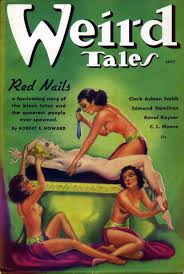 Bill: And Conan’s ingenuity in defeating the dragon! I do agree about the middle flagging a bit. I think this is a case where REH is deliberately setting out to write a three parter for Weird Tales, and things are stretched just a tad to accommodate that. I have no doubt he could have shortened the story by a quarter and maintained the same pace that he started with (although, if pressed, he might have ended up just cutting the opener and beginning the story like “Xuthal of the Dusk”), and he certainly could have lost yet another silly flogging scene, but I really appreciate that the action is squarely focused on Conan and Valeria throughout.
Bill: And Conan’s ingenuity in defeating the dragon! I do agree about the middle flagging a bit. I think this is a case where REH is deliberately setting out to write a three parter for Weird Tales, and things are stretched just a tad to accommodate that. I have no doubt he could have shortened the story by a quarter and maintained the same pace that he started with (although, if pressed, he might have ended up just cutting the opener and beginning the story like “Xuthal of the Dusk”), and he certainly could have lost yet another silly flogging scene, but I really appreciate that the action is squarely focused on Conan and Valeria throughout.
The setting, too, is really evocative. The city is its own closed environment, the current inhabitants hell-bent on killing each other by resurrecting old sorceries and monsters from the city’s past — I would have been happy with even more of that sort of thing. Thrown into the mix is a scheming leader, a sexy vampire, and a sympathetic warrior whose only taste of real humanity comes from his interaction with the outsiders, Conan and Valeria. Copious seasoning in the form of giant snakes, horrific torture devices, burning skulls, pipes of madness, and a kill-tally in the form of a black pillar studded with red nails. And, of course, the “ghost” of one of the original faction leaders (and the guy who invited the Tlazitlans into the city in the first place) returned to wreak vengeance on everyone left standing with a wand of mummification!
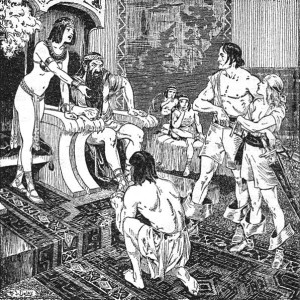 Howard: Yeah, the climax is pretty grand. But it was the entire opening that caught me, from their stand against the dragon to their flight across the plains, to the mystery of the city, described in wondrous detail. And then the fight between Valeria and the evil sorcerer/warrior wearing the skull, and the combat with the warriors… that was top-notch.
Howard: Yeah, the climax is pretty grand. But it was the entire opening that caught me, from their stand against the dragon to their flight across the plains, to the mystery of the city, described in wondrous detail. And then the fight between Valeria and the evil sorcerer/warrior wearing the skull, and the combat with the warriors… that was top-notch.
I was glad that Techotl didn’t end up betraying them as well — I would have liked just a half line of reflection from Conan or Valeria about them honoring his devotion or some such. I, too, could have done without the flogging scene, which didn’t add anything to the story apart from pleasing REH’s editor, Wright, one assumes. I found our vampiress more interesting in conception than execution. She sounds a lot cooler than she ends up being over the course of the story, and doesn’t hold a candle to the actual blood sucker we see in “Hour of the Dragon.” But you see, again, I can only compare REH to REH: “yeah, she was a sexy vampire, but she wasn’t as cool as that OTHER sexy vampire in the other Conan story…”
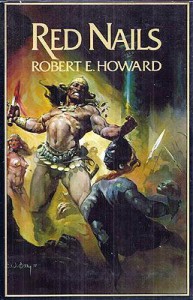 Bill: She’s no Akivasha, that’s true. But Tascela has a different role, and I like that she remains essentially mysterious until she flips the script on everything. She was a nice twist in a tale that could have easily just ended with Olmec fulfilling the same function. While in some ways the multiplicity of characters contributed to the back-and-forth pacing, in also kept ratcheting up the threat level and weirdness-quotient.
Bill: She’s no Akivasha, that’s true. But Tascela has a different role, and I like that she remains essentially mysterious until she flips the script on everything. She was a nice twist in a tale that could have easily just ended with Olmec fulfilling the same function. While in some ways the multiplicity of characters contributed to the back-and-forth pacing, in also kept ratcheting up the threat level and weirdness-quotient.
Howard: That pacing issue is probably why I actually prefer “The Slithering Shadow” in some ways to this stronger work. Howard was a better stylist by the time he wrote this, and the opening is stronger, the themes perhaps richer, but to me, that lesser tale has crackerjack pacing. On the other hand, it lacks Valeria, giving us instead a (mostly) insipid heroine. (And another whipping scene with a wicked foreign woman, naturally.) Side by side the two stories have a lot in common, apart from Thog, and there’s nothing in this tale as cool as Thog.
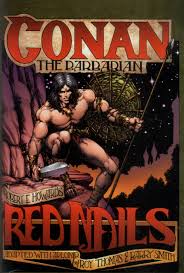 Bill: “Xuthal/The Slithering Shadow,” does have a lot to recommend it — and indeed my favorite part was the intense description of the combat with the aforementioned Thog. In “Red Nails,” Conan never really has a similar moment, or a similar antagonist, although the climax of course is quite desperate for him. Something that is stronger here, I think, is characterization. Admittedly Conan is becoming more and more superhuman as the stories progress (here he doesn’t sleep, his muscular calves prevent his bones snapping from what is in essence a bear trap, etc), but there are a lot of details about his career that call to mind a similar exploration of his past in “The Hour of the Dragon.” Repeatedly he makes note of some piece of information he has picked up about the Hyborian world in his far-roving, and again he describes himself as having been just about everything but a king. He even has a few characteristic lines, such as his conclusion that the people who had built the city led “disgustingly peaceful lives.” It just seems fitting that we get a look, even if it’s just a peek, at all these aspects of his character, pirate, thief, mercenary, and adventurer, one last time.
Bill: “Xuthal/The Slithering Shadow,” does have a lot to recommend it — and indeed my favorite part was the intense description of the combat with the aforementioned Thog. In “Red Nails,” Conan never really has a similar moment, or a similar antagonist, although the climax of course is quite desperate for him. Something that is stronger here, I think, is characterization. Admittedly Conan is becoming more and more superhuman as the stories progress (here he doesn’t sleep, his muscular calves prevent his bones snapping from what is in essence a bear trap, etc), but there are a lot of details about his career that call to mind a similar exploration of his past in “The Hour of the Dragon.” Repeatedly he makes note of some piece of information he has picked up about the Hyborian world in his far-roving, and again he describes himself as having been just about everything but a king. He even has a few characteristic lines, such as his conclusion that the people who had built the city led “disgustingly peaceful lives.” It just seems fitting that we get a look, even if it’s just a peek, at all these aspects of his character, pirate, thief, mercenary, and adventurer, one last time.
Howard: You’re right about that final peek at the various facets of Conan’s career. And you’re also right about characterization, at least in the case of Conan, Valeria, and even poor Techotl. Olmec and Tascela, though, weren’t nearly as interesting. I loved Conan’s lines that you quote.
But I didn’t love the story. I liked it, and I loved parts of it, but that middle sagged. Maybe if I’d come to it never having read any other Robert E. Howard or Conan before I would have been more surprised, but once we got to the throne room I didn’t find the intrigue or the hidden problems of the society — or its history — particularly inspired. It felt very similar to some of the things I’ve read in other Howard stories (even if I haven’t seen all of those things in other Conan tales) here presented with less enthusiasm. It was almost as though he had real inspiration through the first portions of the story, but fell back on old patterns through the back half. Well, until that kick-ass conclusion.
That’s probably not how he himself felt about it, though, because judging by his letters he seemed quite interested in the topic of a decadent civilization and “lesbianism” — though he barely dips his toe into that particular subject, as it’s only very loosely suggested (Tascela clearly has male lovers). I thought the treatment of both subjects was superficial, especially when compared to his deeper look at civilization and barbarism two stories previous.
Bill: Despite its flaws, I came away really pleased with “Red Nails,” and I think it really is more than the sum of its parts. Structurally it can’t compare with a novella of similar length, “The People of the Black Circle,” but it does manage to handle a complicated plot better than “The Servants of Bit-Yakin” while showcasing REH’s frantic inventiveness in a way that is more cohesive than last week’s “The Man-Eaters of Zamboula.” But the more I think about it — and admittedly once again I may be influenced by the sad fact that this is indeed the final red nail driven into the pillar of the Conan canon — the more I’d just have to say that there’s magic in “Red Nails,” the same magic that all the best tales of the series possess. People have filled books, journals, and six months of blog post re-reads trying to put their finger on just what that magic is but, at the end of the day, it wouldn’t really be magic if you could completely explain it. And I can’t; I’m just happy we have what we have of it, and I hope to revisit it many more times in the future.
Howard: I’m not sure I’ll revisit this one, at least not completely. But I do agree that there’s magic here. I just wish I could have gotten swept away with this one the way I had with my favorites. I’m just going to hold onto that sense of magic and be glad for what we got. It’s not like the lamentable final episodes of the original Star Trek, which are so bad they’re cringe inducing.
We hope you’ll join us next week for a wrap-up discussion of all the stories we read!
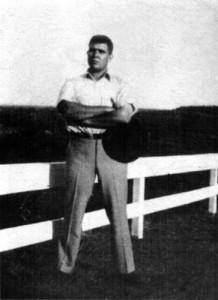
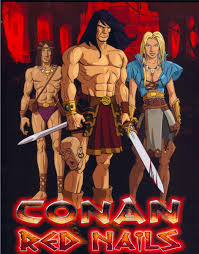
17 Comments